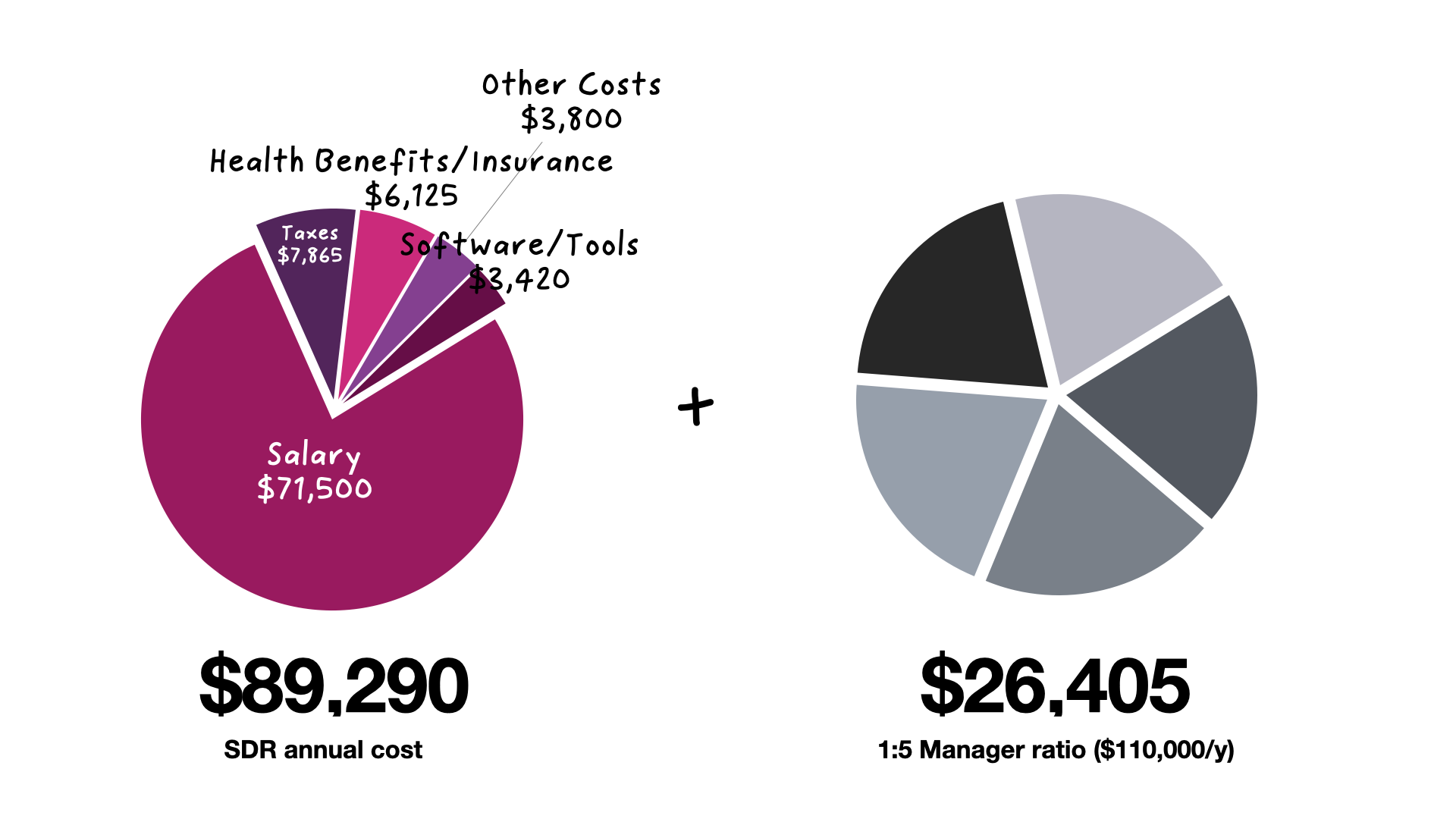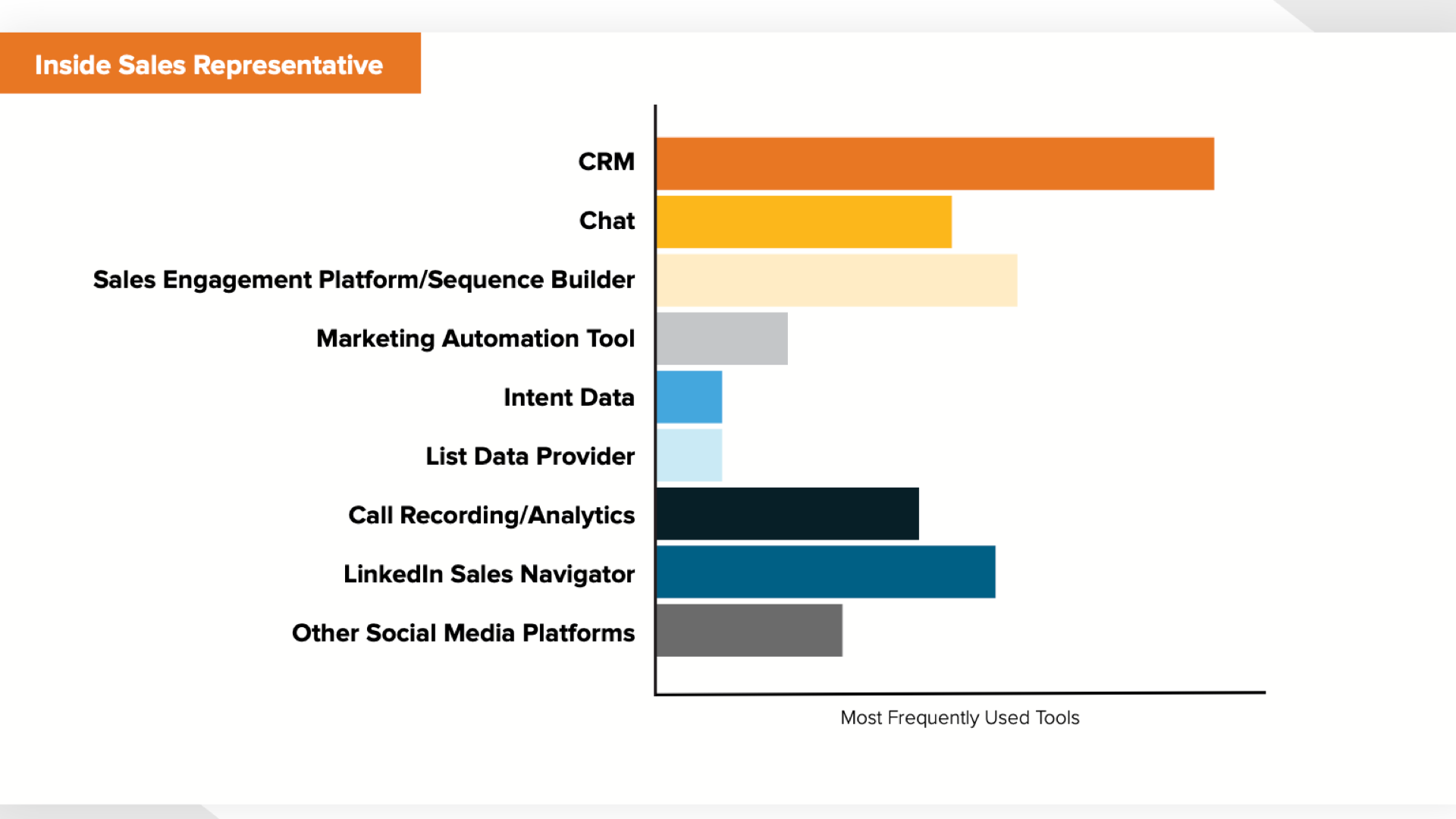The Broken Promise of the $100 Billion SDR Industry: Flip The Script with Founder-Led Sales
The Echo Chamber Effect And Why Copying 'Successful' SDR Models Can Lead You Down a Path of Impossible Math—And How to Ensure You Stay in the Driver's Seat as a Founder.

Early-stage B2B founder or agency owner? Claim an exclusive complimentary advance draft copy of the book here (Limited release.)
There’s an estimated¹ 650,000+ full-time Sales Development Representatives in the United States (hereinafter ‘SDRs’ and ‘BDRs’ interchangeably). It’s probably fair to say that there’s over a million people that do the job, full-time, across the globe. A $50+ billion industry the U.S, or $100+ billion globally.
A sales development representative is someone who focuses on prospecting, moving and qualifying leads through the sales pipeline and deliver those leads to the right salesperson. Their job is, essentially, to book meetings with qualified companies. Typically, on behalf of a founder, sales, or account executive.
The True Cost of Hiring a Sales Development Representative (SDR)
The goal of the SDR function –generally assumed– is to book meetings with qualified companies.
This is accomplished through a range of activities such as email, phone, and social media (on platforms like LinkedIn). Most SDRs are measured by the number of opportunities they create, how many meetings they book, and how many meetings that are completed. As such, it’s often the very first touchpoint with your future ideal customers. The Sales Dev Rep is essentially your Director of First Impressions.
It’s an entry-level job, not unlike the responsibilities of a telemarketer, and 8 out of 10 companies that hire for SDRs does not require a college degree² or any real experience in sales.
The entry-level job pays well, too. $71,500 per year on average³. Like other job functions within a sales organization the compensation is split between base salary and commission (70% base, 30% commission, on average). To put the number in perspective, the average salary in the United States was, for the same reported period⁴, approximately $65,000. Not bad of an entry level job that you can do from home, without a college degree or much work experience.
Add taxes, health benefits, software/tools (prospecting, sales intelligence software, and so on) , and other costs and you’re looking at an additional +36% in costs as an employer. As you go about scaling your SDR team you’ll eventually need a manager to run the team. The most frequent ratio is 1:5, which adds an additional $26,405 in total overhead, on average.

The 'Other' cost category is a very conservative estimate and includes various expenses associated with hiring and supporting a Sales Development Representative (SDR) working remotely from home. It encompasses recruitment, onboarding and training, equipment purchase (such as a computer, monitors, keyboard, and mouse), phone and communication expenses, office supplies, workspace setup costs, and miscellaneous benefits like wellness programs. These figures are rough estimates and can vary widely based on specific company policies, industry standards, and location. A reasonable estimate here is between (First-Year): $3,800 - $15,400.
SDR Cost Calculator
Results
Total Salary Cost:
Manager Overhead Cost per SDR:
Total Annual Cost:
The fully loaded cost adds up to around $119,000 per year, or $9,900 a month on average. That’s arguably a lot of money…
But this is sales...
And sales drive revenue. You’re hiring someone to go get you clients, and as we’ve discussed… it doesn’t take much to scale a b2b business. Besides… what else are you going to do? Facebook ads are too expensive, SEO takes forever, referrals are unpredictable, content marketing is saturated, and so on.
90% of SDRs report to the sales function within an organization, yet... the average SDR holds little or no sales experience.
Research across industry reports from leading tech companies and research firms within the industry suggests that the average SDR has less than 6 months of experience in sales development⁵.
That being said, a share (perhaps even a majority depending on industry and sales cycle) of SDRs and BDRs have arguably not even been in their role long enough to witness a new lead move through the entire sales process and become a new customer (which, in some instances, can take as long as 6-12 months).
Here's what I’m getting at:
You're hiring a moderately expensive, yet undeniably inexperienced person, to do a very important job!
It’s a job with rapid onboarding (a couple of weeks) and high turnover (most stay in their role for less than a year), and 50% never reach their quotas. Again, not unlike telemarketing or other entry-level sales positions. On that note– let’s talk expectations and goals.

A Day In The Life, Activity and Goals
Sales Dev Reps spend their day in a variety of tools such as CRMs, Chat, Sales Engagement Platforms and Sequence Builders, Analytics, LinkedIn and email outreach, and so on. A combination of manual work and automation. They use between 3-5 tools to support them in their day to day work at an average cost of $285 per month.

The average SDR makes 40 phone calls and send 36 emails⁶ per day. The average reply rate will vary by industry, but can generally be assumed as follows:
- 100 emails sent
- 3.2% reply rate
- 1.6% positive reply
- 1.1% schedule meeting
- 0.8% attendance rate
Each publication reports slightly different on reply rates, ranging from 1%-6%, but the average is roughly 3%. Salesloft, for instance, suggests⁷ that a good benchmark for replied % is 5-7%, yet their own study shows⁸ that the average % of emails replied for BDR and SDRs is 2.8%.
Email Effectiveness Calculator
Results
Total Positive Replies:
Total Scheduled Meetings:
Total Meeting Attendances: